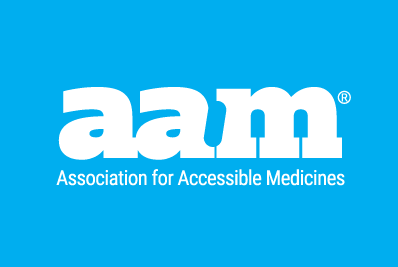While prescription drug shortages are multi-faceted, the issue continues to vex the American health care system, despite efforts from stakeholders to mitigate the problem. A range of experts from across the political divide have agreed that unsustainably low prices for generic drugs is contributing to the challenge. For instance, FDA Commissioner Califf recently said, “We essentially have two drug industries in the U.S. There’s the innovator industry, where the prices are too high, and then there’s the generics industry, where a lot of the prices are too low.”1
To help address this challenge, the Senate Finance Committee has released draft legislation that includes several provisions intended to address the underlying economic conditions and payment policies contributing to drug shortages. One such provision would provide relief to some generic manufacturers by exempting multi-source generics from the Medicaid penalty on drugs with price increases that exceed inflation. The exempted drugs are those that, beginning in 2027, have an average annual cost of $100 or less. In addition, the proposed law would permit the Secretary to waive the Medicaid rebate in certain other shortage situations. Modeled after the Medicare inflation rebate proposal within the Inflation Reduction Act (IRA), this proposal is a vital part of addressing increasing challenges to the ability of manufacturers to produce low-cost generic drugs.
Thus, not only is the Senate Finance proposal narrowly focused on lower cost drugs, but it is also focused on drugs that may be in shortage. As outlined in a recent Medscape article, drug shortages have real patient impact. Efforts to address this issue, as well as any critiques, should not focus solely on drug spending but also consider the overall patient impact and cost. Most products covered by this proposal are low cost, by definition, while the costs of non-adherence and associated acute healthcare events have tremendous financial and health-related costs for patients, caregivers, and the healthcare system.
In light of that, it’s disappointing that some authors have not been willing to take a broader view related to patient care and seem only narrowly focused on overall drug costs, not in ensuring that generic medications are available to all Medicaid patients. Accordingly, it may be helpful to understand how inflation-based penalties originally designed for monopoly brand drugs are not well-designed to police pricing for multisource generics.
Multisource generics face intense, head-to-head price competition based on volume and price. There can be significant variability in percentage terms between wholesaler contracts with manufacturers, since fluctuations in manufacturing, shipping, and ingredient costs, as well as supply chain challenges, impact contracting at different points in time. When the volume of a generic purchased by a wholesaler changes, it can result in a change in the manufacturer’s average price and can then trigger an “inflation penalty”, even if the manufacturer did not take a price increase. This is not a hypothetical concern. In AAM surveys of member companies since implementation of the penalty, generic manufacturers consistently report that they are receiving such “penalties” for numerous products on which they did not increase the price.
By comparison, manufacturers in single source markets, whether brand or generic, can control and predict their average manufacturer price by virtue of being the only such product available, and due to the flexibilities associated with higher margin products. In such instances, the manufacturer can weigh the consequences of taking a price increase and, if such price increase exceeds inflation, plan to pay the Medicaid penalty.
The current Senate Finance proposal is targeted precisely at the low-cost, low margin products most vulnerable to this dynamic. Not only is the proposed policy in the Senate legislation narrowly tailored toward low-cost products and products at high risk of shortages, it also does not create the risk of excessive price increases. As noted previously, the generic market is highly competitive, resulting in consistently lower prices for years before any “inflation penalty” existed in law. It is in fact that competition that keeps prices down. Whereas single-source brand drugs can raise prices and maintain market share, generic manufacturers that take excessive price increases will lose significant market share as highly consolidated purchasers switch to lower cost products. These pricing dynamics provide a strong disincentive for generic manufacturers to take unnecessary price increases.2
Further, it is important to remember that state Medicaid programs, either through their fee-for-service (FFS) agencies or their contracted managed Medicaid health plans, aggressively manage their drug costs through state rate setting practices or through pharmacy benefit managers (PBMs). For multi-source generic drugs, both state FFS programs and PBMs use maximum allowable cost (MAC) programs to place an upper limit on what a pharmacy can be paid to dispense a medication.3 These MAC pricing programs use a variety of market pricing sources to establish upper payment limits for drugs and provide an added measure to insulate state Medicaid programs from any generic price spike. MAC pricing also acts as additional downward pressure on generic pricing, as pharmacies will pressure wholesalers to provide products at an acquisition cost below their reimbursement rate.
The data is clear. Generic drug shortages are a significant problem, and unreasonably low prices is one of the reasons. According to IQVIA the majority of generics in shortage have a price of less than $1. And the risk that a given drug enters shortage increases as the number of manufacturers producing that drug decreases.4 5 Policies are needed to help generics stay in the market, and the Senate Finance Committee proposal to tweak the Medicaid inflation rebate is a proactive policy that works upstream to prevent discontinuations and reduce shortage risks rather than scrambling to solve a shortage after it has already occurred.
References
- Fierce Pharma. A tale of 2 industries: FDA’s Robert Califf weighs in on ‘fundamental problem’ causing so many shortages. August 2023. Here.
- Center for Analytics and Business Insights, Olin Business School at Washington University, “US generic pharmaceutical industry economic instability.” April 2023. Here.
- Kaiser Family Foundation. “Pricing and Payment for Medicaid Prescription Drugs.” January 2020. Here.
- American Society of Health System Pharmacists, “ASHP drug shortages roundtable report.” 2017. Here.
- Lui, Ina, et al. “Development and validation of a predictive model to predict and manage drug shortages,” American Journal of Health-System Pharmacy. July 2021. Here.

